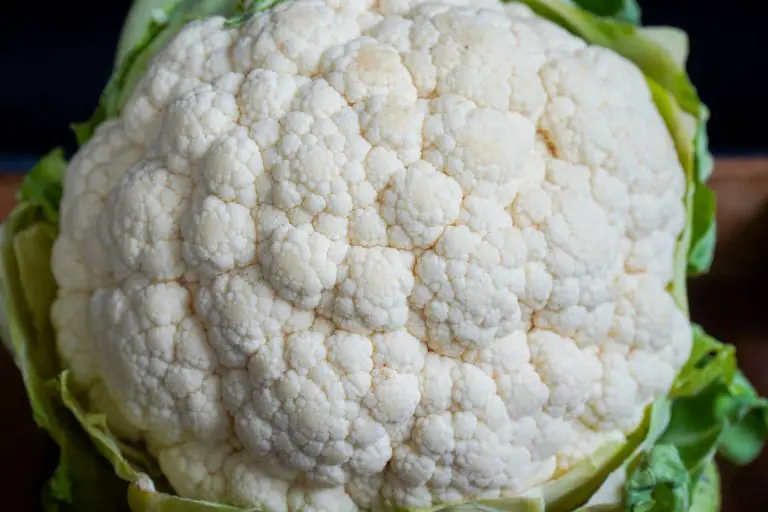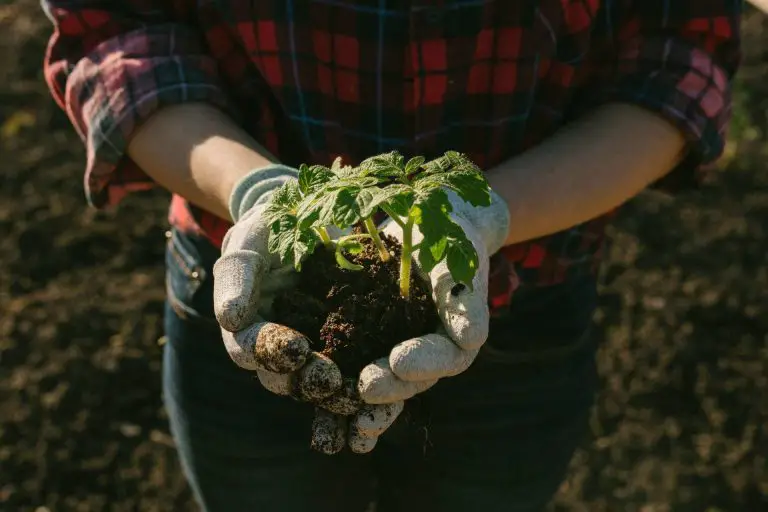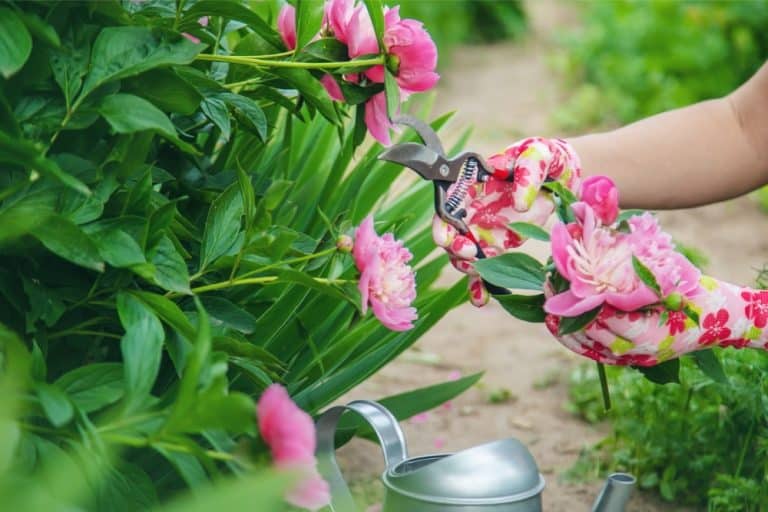How To Get Rid Of Pot Worms [A Quick And Easy Guide 2022]
Want to know How To Get Rid Of Pot Worms? Here is a quick and easy guide to getting rid of these pests once and for all!
Potted plants appear to be a natural shield against parasitic worms. These bugs, which can be useful, can, nevertheless, occasionally make their way into plant pots. Worms of various species can hurt your flowers and ground and constitute a hazard to potted plants both indoors and outdoors.
If you look into the drainage holes, you could see them on plants, in the soil, or even a little bit beneath the soil.
Although many individuals like to add a few worms to their plant pots for improved plant development and indoor gardening, ignoring them and letting them reproduce excessively might lead to difficulties.
This article will assist you in determining why you have worms in your plant pots and how to get rid of them so that your plants and soil may be alive and comfortable.
DISCLAIMER
Some of the links on here are affiliate links and I may earn if you click on them, AT NO EXTRA cost to you. Hope you find the information here useful! Thanks.
Related Articles:
- How To Sterilize Soil In Many Different Ways!
- How To Treat Untreated Wood
- The Essential Guide to Permaculture Animals
- How To Get Rid Of Fungus In Mulch FAST!
- How To Grow Tomatoes On A Fence: 6 Step Guide [2022]
- How To Grow Tomatoes From A Supermarket: My Step-By-Step Guide!
- How To Dry Willow Branches The RIGHT Way [2022 Guide]
How To Get Rid Of Pot Worms

You may start preparing to get rid of worms in your potted plants after you know what kind of worms are present and why they’re there. These worms consume the fungi necessary for good plant development, which can cause withering. They will completely destroy your plants if that occurs!
Pot worms, also known as white worms, are a sign that you need to make changes to the soil in your worm bin or potted plants.
To get rid of worms in potted plants, try the following methods:
1. Use Insecticide
If worms and other pests are becoming a major problem, a pesticide or nematocide can be used safely. These chemical substances will immediately eliminate your pests. If you’re going to apply a pesticide indoors, make sure it’s labeled for indoor use.
This is also true if you have any pets. Pesticides for certain plants are also advised. Also, if you intend to use the pesticide on non-ornamental flowers, make sure it is safe to use.
Neem oil is a great pesticide. Neem oil is a natural substance derived from the Indian neem tree. This is not only an insecticide, but it’s also a fungicide.

It destroys worms and bugs by altering their hormones, among other things. It’s safe to apply on plants and won’t harm earthworms. For grub worms and hornworms, neem oil is particularly effective.
Many bugs and worms are attracted to hot pepper wax, making it a useful insecticide. If your potted plants are outside, it also deters certain more serious garden pests like rabbits and deer. It’s best to apply it every few days until the infection is under control, then every few weeks after that for upkeep.
2. Repot It
Once you have worms in your plant pot, you may not realize you have them until you repot them.
Earthworms, in particular, will be sticking out around the bottom of the dish. Red wigglers will be found near the top of the plant, however, you will see some wriggling companions when you repot your plant to offer it new soil.
When it comes to repotting, the very first step is to get rid of any worms you can locate. You can use your fingertips or tweezers to achieve this.
Rinse the root systems of your plants before repotting them with a new potting medium, compost, or fertilizer to guarantee no parasites or eggs are clinging to the roots or the plant’s bottom. If you don’t clean the roots, any possible eggs left behind could hatch, resulting in worms in your plant.
Remove the plant with care, then put the root system in a big bowl of warm water. With your fingers inside the dish, remove excess soil. Repotting should then be done using new, sterile potting soil rather than utilizing old soil that will still be affected by the infection.

When potting medium your plant, especially if it has an introduced species infestation, it is advisable to discard the soil rather than composting or reusing it. You can use the same pot that you previously used; just make sure to clean it incredibly well.
Before planting, you also should clean the pot with weak bleach.
3. Drown Them
Despite their preference for damp soil, worms dislike being submerged.
If your plant has worms, you can take it out of the pot and bathe the plant’s roots and soil in hot water with pesticide soap for 20 minutes. You could catch and release the worms or place them in your compost pile if they attempted to flee.
This method is most effective if you want to know how to get rid of pot worms that are particularly dangerous.
It’s not a good idea to do this with beneficial worms since you can simply put them outside in the soil. When you do this with hazardous worms, the worms and their eggs will die.
Cool water is an easy technique to remove helpful earthworms and red wigglers from a crop by immersing it. The worms will not be harmed; instead, they will escape. You can place them in a compost bin or in your yard once they’ve come out.
4. Use Natural Predators
Natural predators exist for many of the parasites and pests mentioned. Using a plant-friendly natural predator to control worms and larvae is a great way of getting rid of other insects while also maintaining your garden.
This is a method on how to get rid of pot worms that won’t harm the environment 🙂
Fireflies are a plant-friendly predator you can introduce to your garden because they may dwell in shrubs around your yard and only come out at night, so they won’t bother you. A praying mantis is attracted to floral plants and berries, so you might want to explore bringing one into your home.
Keep lots of tall grass around, though, because praying mantis-like to lurk until it’s time to pounce.
Birds can also help to keep pot worms at bay. You can do this by hanging a bird feeder in your yard, or even a birdbath which is regularly maintained with fresh drinking water.

You’re far more likely to introduce new bird species to your yard if you have a large variety of plants for them to choose from. The more plants you have, the more wildlife you’ll begin to witness.
You can even utilize frogs and toads for this; Leave extra shelter and liquid for frogs if you live in a neighborhood where they are abundant. The insect buffet will undoubtedly keep them there.
If you want to attract natural predators to your garden, make sure you don’t use any pesticides that could harm them. Keep an eye out for them when you’re mowing the lawn or doing your regular gardening; you don’t want to destroy them.
FAQs
What Are Pot Worms?
Pot worms are just another species that consume food scraps, and vegetable scraps, decomposing organic matter, and aerates the soil or compost nearby.
They are little white worms that live in fresh soil and are abundant in nitrogen. The enzymes and bacteria in decaying leaves and plant waste are what pot worms eat.
Overall, gardeners may find them to be a hassle.
These worms consume the fungi necessary for good plant development, which can cause withering.
They will totally kill your plants if that occurs! Their larvae eat the growing roots or shoots of seedlings, and they eat decaying plant matter.
When their populations increase, they face competition from other worms or threaten your indoor plants.
They are commonly discovered in dead leaves, organic waste that is degrading, and potted plants. More specifically, the presence of pot worms indicates an excess of organic matter in your garden soil.
Although white worms in compost are not really a direct threat to anything else in your compost, they flourish well in environments that the red wigglers find unpleasant.
If pot worms have taken over your decaying plant matter completely and you want to reduce their population, you will need to alter the environment of your decaying plant material.
Pot worm eggs in compost indicate that the other helpful tiny worms are not flourishing as they should, so altering the plant’s environment can alter the worm population.
When there is a lot of both water and nutrition, pot worms can take over your healthy plants or compost pile because they thrive in those conditions.
Types Of Worms In Potted Plants
1. Fungus Gnat Larvae
Compost, leaf mold, and organic mulch are the top feeding choices for these tiny worms. In the absence of these, they will eat and destroy plant roots. Ultimately, the fungus gnats will be the reason why the plant is destroyed.
2. Nightcrawlers
Pot worms and other nightcrawlers are helpful invertebrates that aerate the soil naturally. Additionally, they aid in loosening clay, deep soil, and dry soils from soil moisture while devouring decomposing plant matter to assist living plants.
3. Red Wrigglers
Worm castings are highly coveted by organic gardeners because these worms yield both a natural fertilizer and a powerful insecticide against insect infestations.
Where Do Pot Worms Come From?
Compost in the garden plants often includes pot worms. They could be in the fresh potting soil in outdoor potted plants.
When they ultimately find their way to the plant soil, it is because the properties of the plant soil have altered – it may now be excessively damp or have an acidic pH.
When the right conditions are present, you may find the worm infestation has reproduce rapidly!
In compost piles, where they aid in the breakdown of organic debris into nutrient-rich soil, you will find multiple of these tiny white worms.
They are also present in your pot plants where typically, they come home with other plants from the nursery.
Use wet cardboard to catch worms. It might not be practical to soak a huge plant if it is being grown in a pot. This technique may be helpful for removing those worms from the potting soil.
Why Does My Plant Have Worms?
Worms are found naturally in our soil and are beneficial to both soil and plant health. Their byproducts, also known as casings, are organic, strong fertilizers for plants since they devour decaying plant debris.
They help aerate the soil to keep it from becoming overly compacted. The very first step in trying to get rid of parasites in flower pots is to figure out why they’re there in the first place.
Worms won’t have been inside the bag if you are using potting soil, which is really the only way of ensuring sterile soil. Worms will eventually find their way into potted plants if they are left outside.

Worms get into potted plants for a variety of causes, including people putting them in there intentionally, or other infested plants being nearby.
Regardless of how they got there, If you notice your plant pot has worms, check to see if they are of a kind that can be kept in a potted plant and do not need to be killed. Worms also enjoy damp soil, so they’ll be more likely to be found in plants that need to be watered frequently, such as succulents.
Note– If you want to make your green fingers happier and your life easier, you can use this affordable 83-piece ultimate gardening set to help your garden like a pro!

Are Worms Bad?
When worms are already in your plants rather than in your soil, they can be a nuisance.
Worms can have a beneficial or negative impact on your potted plants by consuming rotting plant waste, but if there isn’t a sufficient amount, they will begin to devour the plant structures, particularly the roots. If there are too many worms in a pot and they also have to battle for nutrients, this happens.
Grub worms, for example, are parasitic and rely on the crop itself rather than the soil. Because plants require strong, healthy roots to acquire nutrients, having worms damage a plant’s root system is practically irreparable.
Consider using a dehydrator if you need to get rid of composting worms as soon as possible. In short, a dehydrator is an oven that kills bugs and bacteria by heating air rather than using a flame.
What Are The Benefits Of Pot Worms?
They aid in the breakdown of organic materials and compost. Furthermore, their presence shows that the moist soil is fertile and has a sufficient amount of organic material.
Although pot worms are plant pests in some ways, they can also be useful.
Find pot worms and determine whether their number has gone out of hand if you are having trouble getting your new plants to thrive.
Wrap Up
Well, there you have it. A quick guide on how to get rid of pot worms, so you can have the garden of your dreams, once and for all!




![How To Harvest Kale Without Killing The Plant [What to Avoid!] 2023](https://aboveandbeyondgardening.com/wp-content/uploads/2022/10/how-to-harvest-kale-without-killing-the-plant-1-768x512.jpg)

![8 Pumpkin Growing Stages [+ Growth Tips!]](https://aboveandbeyondgardening.com/wp-content/uploads/2022/10/Pumpkin-Growing-Stages-9-768x512.jpg)